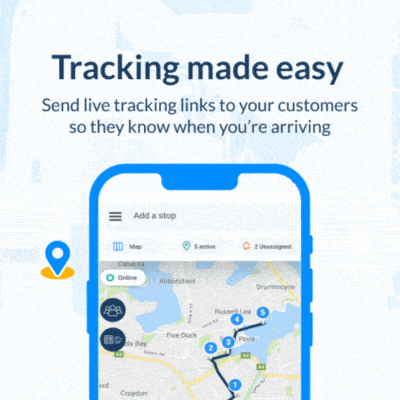Fleet driver safety is a critical concern for any fleet manager, and implementing a comprehensive fleet driver safety program is essential to ensure safe and efficient operations. Fleet safety rules and procedures must be established and enforced to reduce the risk of accidents and ensure compliance with federal regulations. Improving driver safety through fleet management also involves regular training and education for drivers, as well as establishing and enforcing safety policies and procedures to reduce the risk of accidents and ensure compliance with federal regulations.
To achieve this, fleet managers can utilize various fleet management solutions to improve fleet safety and reduce costs associated with accidents and insurance claims. In this article, we will explore the best practices for improving driver safety, technology solutions for driver safety, strategies for monitoring and managing driver safety, and the benefits of improving driver safety.
We will also discuss how a fleet management system, such as Locate2u, can significantly contribute to improving fleet safety by providing real-time GPS tracking, driver behavior monitoring, route optimization, and ELD compliance features. With the right fleet management tools and strategies in place, fleet managers can ensure their operations are safe, efficient, and profitable.

Improving Driver Safety Through Fleet Management
The significance of driver protection in fleet management
From logistics and transportation to construction and utilities, fleet management is a crucial component of many different businesses. However, there is a considerable chance of mishaps and injuries, which could have dire repercussions for businesses and their staff.
Effects of accidents on organizations’ costs, reputations, and productivity
In addition to the human cost, accidents can have a major impact on organizations that rely on fleet management. For example, accidents could
- increase the cost of medical care, auto maintenance, and insurance premiums.
- lower output brought on by driver absence and vehicle problems damages client confidence and the company’s brand.
- Administrative sanctions and statutory requirements
Because of this, it is essential for businesses to prioritize driver safety and to implement workable measures to prevent accidents and mitigate their effects when they do occur.
The contribution of fleet management to lowering collisions and enhancing driver safety
Safety for drivers and accident avoidance are crucial goals of fleet management.
Fleet managers may lower the risk of accidents and encourage safe driving practices by implementing best practices. These may include regular vehicle inspections and maintenance, driver training and certification programs, and telematics technology to monitor driver behavior.
Advanced driving assistance systems (ADAS) and collision avoidance technology, for example, can further improve driver safety and reduce accidents.
Overall, businesses may decrease the risk of accidents and injuries by giving driver safety top priority in fleet management, as well as enhance their reputation, productivity, and financial success.
Guidelines for Increasing Driver Safety
Fleet managers must ensure driver safety, and there are several best practices they may implement to do this.
Performing routine vehicle maintenance and inspections
Regular vehicle maintenance and inspections are essential for finding and fixing any problems that can jeopardize safety. The maintenance plan for brakes, tires, lighting, and other safety measures should be established by fleet managers. They should also make sure that qualified mechanics are used to service automobiles so that they can do the necessary repairs and replacements. Fleet managers can lower the risk of accidents brought on by mechanical issues by maintaining their cars in good condition.
Putting in place certification and training programs for drivers
Driver education and certification programs can aid in the development of the skills and information required for safe vehicle operation. Fleet managers must offer thorough instruction that addresses subjects including defensive driving, hazard recognition and avoidance, and appropriate vehicle management practices. In order to make sure that drivers are knowledgeable about the most recent safety procedures, they should be compelled to undertake routine certification and recertification.
Using telematics to keep an eye on driver conduct
Fleet managers can use telematics technology to better understand driver behavior and pinpoint areas for improvement. Fleet managers can spot drivers who may be participating in risky behaviors and give them individualized coaching and training by employing telematics devices to monitor variables like speed, braking, acceleration, and vehicle usage. Personalized safety programs for certain drivers can also be created using telemetry data based on their unique demands and driving styles.
Enforcing driving safety regulations and guidelines
Fleet managers should create safety-focused rules and procedures and constantly implement them. These regulations should encompass things like how the car is driven, how the driver acts, and how the cargo is handled. Additionally, fleet managers need to clearly define and continuously enforce penalties for breaking safety regulations. Fleet managers may foster a culture of safety and lower the likelihood of accidents brought on by driver error or noncompliance by implementing safety regulations and procedures.
Providing rewards for defensive driving
Giving drivers rewards for their efforts in driving safely can motivate them to put safety first. Fleet managers can create incentive plans that give drivers points for accomplishing certain safety objectives, like lowering accident rates or raising fuel economy. Financial bonuses, recognition programs, and various sorts of awards are examples of incentives. Fleet managers can establish a positive feedback loop that reinforces safe behavior and motivates drivers to keep safety as their top priority by offering incentives for safe driving.

Technology-Based Driver Safety Solutions
Along with basic practices, technology can significantly contribute to enhancing driver safety. Some of the most popular technological tools for fleet management are listed below:
ADAS stands for advanced driver assistance systems.
To prevent incidents and lessen their severity, ADAS employs cameras and sensors to assist drivers. Automatic emergency braking, lane departure warning, blind spot recognition, and adaptive cruise control are a few examples of ADAS capabilities. Drivers can respond to possible risks more rapidly and prevent accidents with the aid of ADAS.
Utilizing technology to prevent collisions
Collision avoidance technology spots potential collisions and alerts drivers to avoid them using sensors and cameras. Using this technology, rollovers, rear-end collisions, and other types of accidents can be prevented.
Interior cameras
In-cab cameras can monitor the driver’s behavior and document the event in the event of an accident. This technology can help fleet management identify risky driving practices and implement the necessary corrections before an accident occurs. In-cab cameras may be able to provide critical evidence in the event of a dispute or accident.
GPS tracking and improved route planning
Fleet managers may follow vehicles in real-time, optimize routes to cut down on travel time and fuel usage, and keep tabs on driver conduct with the aid of GPS tracking and route optimization software. Additionally, this technology can aid vehicles in navigating unfamiliar roads and avoiding gridlock.
ELDs, or electronic logging devices
The majority of commercial vehicles in the US are obliged to have ELDs, which are used to electronically track the hours of service (HOS) of drivers. ELDs can assist in preventing driver weariness and lowering the risk of accidents brought on by drowsy driving by automating HOS tracking.
While technological solutions might aid in enhancing driver safety, fleet managers must make sure that they are implemented in a way that doesn’t jeopardize driver privacy or foster a climate of mistrust. Drivers should be made aware of the advantages of technology, and fleet managers should teach them in its use and provide clear guidelines. They can achieve this by fostering a culture of safety that safeguards drivers, property, and reputation.
Driver Safety Monitoring and Management Techniques
Driver safety management and monitoring demand constant focus and effort. Fleet managers can utilize the following techniques to increase driver security:
Feedback and Regular Performance Evaluations
Fleet managers should regularly assess the performance of their drivers and offer suggestions on how to make improvements. Metrics including accident rates, fuel efficiency, and on-time delivery performance might be included in evaluations. Fleet managers may assist drivers develop their abilities and lower the risk of accidents by giving them feedback and support.
Accident analysis and investigation
Fleet managers can take corrective action by identifying the underlying causes of accidents with the use of accident investigations and analyses. Fleet managers should set up clear procedures for reporting and looking into incidents, which should include talking to drivers and witnesses as well as looking at data from telematics and in-cab cameras.
Fatigue Management for Drivers
In the transportation sector, fatigue is a substantial contributor to accident risk. Fleet management should put policies and procedures in place to manage driver weariness, including restricting the number of hours that drivers can drive, scheduling rest intervals, and giving them access to sleeping facilities. Managers can monitor driver hours and guarantee adherence to hours of service standards with the aid of telematics and ELDs.
Driver Reward and Recognition Programs
Safe driving behavior should be rewarded and recognized, which helps strengthen good habits and raise driver involvement. Fleet managers can put in place systems for rewarding and recognizing drivers who adopt safe driving habits, such as conserving fuel or finishing training courses. Fleet managers may promote safety and continuous improvement by praising and rewarding safe drivers.
In general, maintaining and monitoring driver safety calls for a multifaceted strategy that incorporates best practices, technological advancements, and constant review and feedback. Fleet managers may prevent accidents, safeguard drivers and assets, and enhance general corporate performance by putting these tactics into practice.
Advantages of Increasing Driver Safety
Numerous advantages for fleet management operations can be derived from increasing driver safety. Here are a few significant benefits:
Lower Rates of Accidents and Injuries
A decrease in accidents and injuries is the most evident advantage of increasing driver safety. Fleet managers can assist prevent accidents and lower the risk of injury to drivers and other road users by applying best practices and technological solutions for driver safety. Reduced accident and injury rates can help lower vehicle downtime and maintenance costs, enhancing fleet performance all around.
Costs of Accidents and Insurance Claims are Lower
Fleet management operations can incur significant costs as a result of accidents, including costs for everything from vehicle repairs and medical bills to legal fees and insurance claims. Fleet managers may save money on these costs and boost their bottom line by lowering accident rates. Additionally, cheaper insurance premiums can result from fewer accidents, further cutting expenditures.
Increase in productivity and efficiency
When drivers are hurt or involved in accidents, it might affect their ability to work and finish their routes on schedule. Fleet managers may increase productivity and efficiency by enhancing driver safety and keeping drivers on the road and in good health. In order to further increase productivity, managers might use technology tools like GPS monitoring and route optimization to discover and eliminate wasteful behaviors.
Improved Customer Satisfaction and Company Reputation
Prioritizing driver safety in fleet management operations demonstrates a company’s dedication to ethical business practices, employee safety, and public safety. This can improve client happiness and the company’s reputation. Customers are more willing to collaborate with businesses that put safety first, and a fleet management operation may stand out from rivals with a solid safety record.
In general, increasing driver safety can be quite advantageous for fleet management activities. Fleet managers may build a safer, more effective, and more prosperous firm by lowering accident rates, increasing efficiency, and enhancing the company’s reputation.

How fleet management software improves driver safety
Fleet management software like Locate2u can significantly contribute to improving driver safety. Firstly, by utilizing real-time GPS tracking, Locate2u can provide fleet managers with the ability to monitor the location and movement of vehicles. This can assist in identifying unsafe driving behavior such as speeding or aggressive driving and allow managers to take action to address it. Real-time tracking also enables managers to reroute drivers to avoid traffic or hazardous road conditions.
Locate2u’s fleet management software provides valuable tools for improving driver safety. By monitoring driver behavior, optimizing routes, and providing real-time information and communication, these tools can help reduce the risk of accidents and improve the overall safety and efficiency of fleet management operations.
Click here to learn more about Locate2u’s fleet management software!














